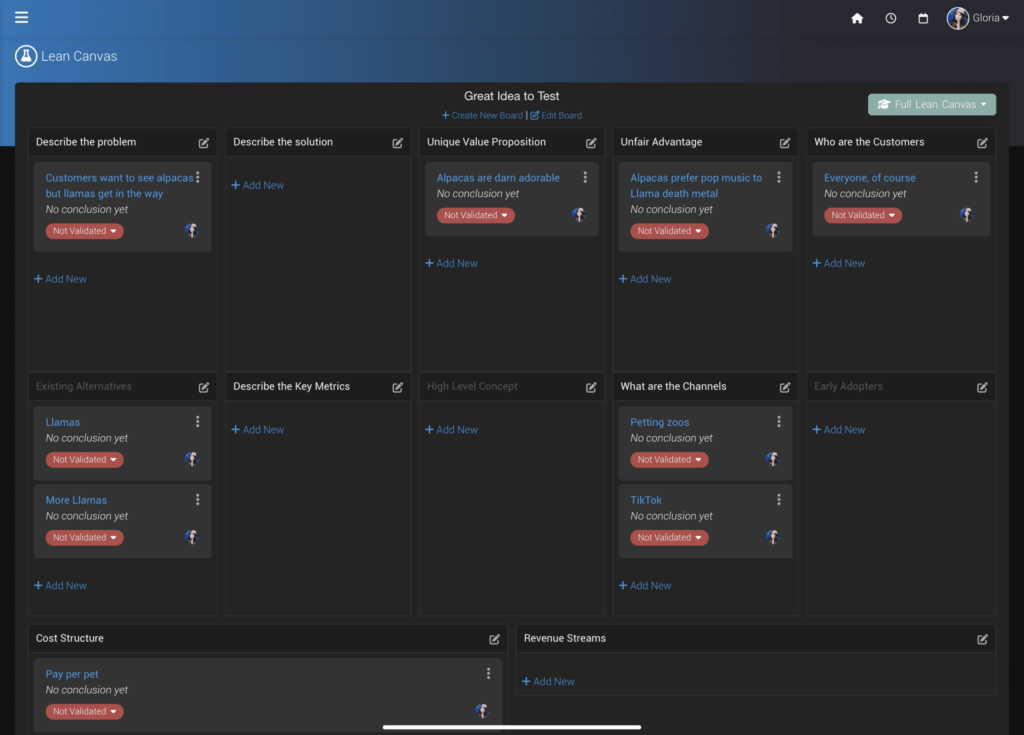Estimated reading time: 6 minutes
Lean Project Management: Lean Six Sigma, Lean canvas, and more
Table of contents
Lean project management is a project management methodology designed to eliminate waste and minimize the time spent on activities that do not add value. Based on the principles of lean manufacturing, it was first developed by Toyota in the 1940s. This approach to work (eliminating waste) has been stretched across multiple field domains; including healthcare, startup and business culture. For the sake of our discussion here, we’ll focus on lean startup project management or just simply lean management.
Because the principles of lean involve eliminating waste, process improvements, creating value, and learning, the systematic approaches can take several different forms. Some of these approaches include the Deming Cycle and Lean Six Sigma (DMDEI). For us here at Leantime, we also consider the principles of Design Thinking and agile as part of our path towards eliminating waste and optimizing for value.
The other way we use lean here is through utilizing the Lean startup methodologies for idea and business validation. This can be found as a canvas in our system. More on that below.

Lean Six Sigma (DMDEI)
As mentioned above, DMDEI is a Lean six sigma project management process intended to optimize and support process improvement and business value while decreasing waste in order to obtain the best business outcomes.
DMDEI can be broken out as:
- Define
- Measure
- Explore
- Develop
- Implement
Define
Creating a project definition is fundamental to understanding the work that is on its way to transpiring. When you take the time to define the project and the scope, you help to create alignment and understanding for the team and for the project leader.
To define the start of a project you must ask questions like: “What is the goal of the work? Who are the internal and external stakeholders? What is the project for? What are the pieces (departments or otherwise) that will be impacted by the work?”
Measure
Measurement can be done in many ways and is primarily done through obtaining and analyzing data and customer engagement/feedback. While a project is still in discovery, this can be essential for developing customer focused products.
Explore
Once you’ve done the measurements, you now have data to explore and get understanding around. This is where you can begin to ideate and create solutions for whatever problems have been identified for the user. Once you know what they need, how will you bring value? What are the options? Are these the best?
Develop
Now that you have a better idea of the scope, it’s time to develop a project plan. Asking questions like: what is the most efficient way to get the work done? Are there things that can be eliminated? Others that can be included to offer more value, more quickly? It’s vital to have a good understanding of the goals, data, and the work load to be able to find the optimal workflow to implement.
Implement
Implementation involves testing, learning, and making changes as necessary. Does the flow here make sense? Does the project and data align? Is the work going smoothly? The I here could also be making improvements as part of the implementation process. Lean is about testing and learning.
Applying Lean Project Management
Lean project management is a system driven approach to project management that can be tricky to implement. Projects are not always linear and if you are running multiple projects at a time, the work can vary in state and flow.
This project management implementation requires team buy-in and understanding of the execution process, which can have added challenges if you work with cross-functional project teams.
There are project management tools, however, that can help with using lean project management as a process in your work place. These lean project management tools are intended to help simplify the process and eliminate the waste built up in our project flow. Leantime is a system that incorporates the principles of lean into the UX and approach to managing projects.
Ultimately, finding the right balance in the work and creating a cohesive and repeatable framework with your teams is vital to increasing project success.
Lean for Startups & Business Validation
Along with Six Sigma, the lean startup methodology is another project management process geared towards business and startups. The result is the Lean canvas created by Ash Maurya and adapted from the business model canvas.
Though not written out in the same step process as DMDEI, the lean canvas is often compared to a one page business plan. The concepts do align with DMDEI — it requires defining the idea, validating it, testing, and making changes as you learn more.
Deploying lean into your project management — whether through Six Sigma, Lean startup or others — is a path towards repeatable and dependable outcomes that promote offering the most customer value.
Tools for managing lean projects with a lean canvas
Leantime vs Leanstack
Leantime started in part because we were using lean startup concepts to manage our own business ideas and work. Our lean canvases were printed out as giant boards and put up on our office walls. Sticky notes were everywhere.
We quickly experienced this did not travel well and it was only successful if the whole team was in the office so we turned to looking for online tools.
Leanstack as an online lean canvas
Leanstack is an online Lean canvas tool that allows you to fill out the canvas online. It has boxes as laid out by Ash Maurya and text can be entered into them. It is an online version of what we found ourselves using on our walls.
Leantime: lean project management with the lean canvas
The main similarities between Leantime and Leanstack start and stop with the lean canvas. Leantime is intended to take the canvas through your project life cycle and move you through the Six Sigma, agile, and design thinking flows of lean project management.
Using Lean project management for project success
The longer we’ve been in project management, the more it’s been clear to us that “out of sight, out of mind” is even more true for teams and their projects. If your project definition, purpose, and design is not near your work — it becomes easier to fall into shiny object syndrome and/or prioritizing the wrong things.
Lean project management cannot and should not be done in silo’d workflows. The story of the project needs to be kept with the work in order to stay engaged with the team and to reach the best project and business outcomes.
Implement lean processes. Eliminate waste. Create more value.
For more information on starting a lean project by using lean project management, visit our features page to learn more about our system.
Other articles you may be interested in:



